It has to be said that there isn't much
difference between install Windows 8 and installing
any other version of Microsoft Windows. Perhaps the
biggest change the user will see is in the layout of
the relevant screenshots. The more sophisticated the
operating system the more visual the installation
screenshot become.
When installing any software application it is
important that you have everything to hand, so that
you don't have to keep stepping away from the
install to find drivers for, say, your SATA drive.
Making sure you have everything to hand will help
the installation run smoothly and, in the long run,
save on valuable time.
- Switch your Computer on.
- While your system is booting, quickly open
your CD/DVD ROM and insert your Windows 8 DVD.
- If your PC has an option to boot to a boot
menu then press the relevant F key (this may be
F12 or something similar depending upon the make
of your computer) to open up the boot option
menu. Once the boot menu appears select the
option for your CD/DVD-ROM and then press the
Enter key. The Windows operating system should
now start to install.
- If you you do not have a boot menu option
then you will need to change the boot option in
the System BIOS. Once you have done this and you
have rebooted your PC you should now see an
option to 'Press any key to boot from CD or
DVD.' Press the Enter key to continue with the
installation.
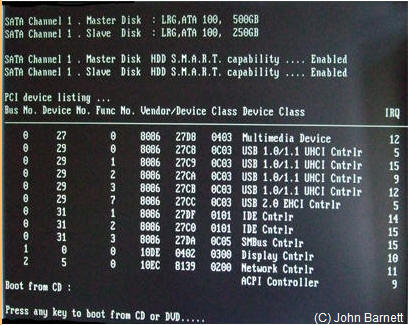
Fig: 8-3-1 If you see this
Boot from CD screen, Press any key to boot from
CD or DVD
- The first screen you see will be the Logo
screen. This will usually remain on screen for
some moments before anything happens. Please be
patient during this initial install phase.
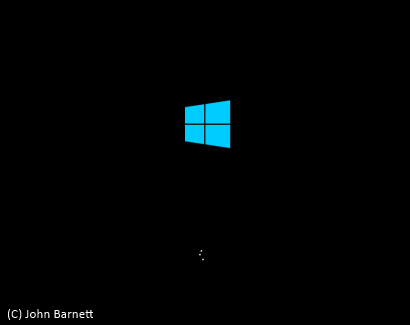
Fig: 8-3-2 The Windows Logo
screen
- After a while the screen will change and you
will be asked to select your Install Language,
Time and Currency format and your Keyboard or
Input method. Make the necessary selections and
then click the Next button.
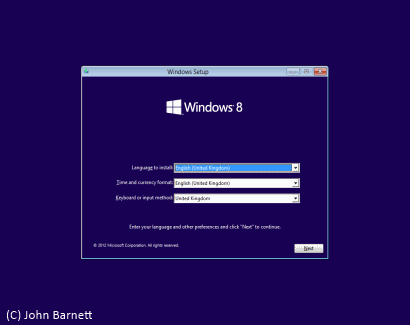
Fig: 8-3-3 Windows 8 language
and keyboard selection.
- Once the language and keyboard options have
been selected it is time to start the install,
click the Install Now button to continue.
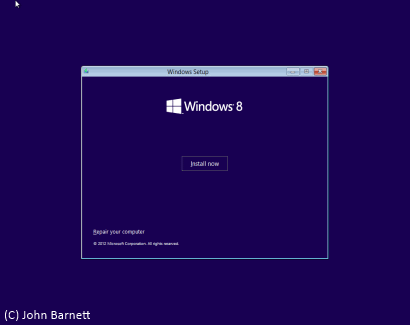
Fig: 8-3-4 Click the Install
Now button to start the installation of Windows
8.
- The installation will now start.
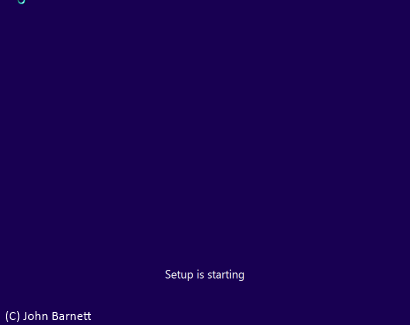
Fig: 8-3-5 Setup is starting
screen.
- The next step is to input your 25 character
product key. You can do this either directly
from your keyboard or, if you are using a touch
sensitive screen, from the on-screen keyboard.
The on-screen keyboard is accessed by tapping
the keyboard icon to the right of the product
key dialogue box.
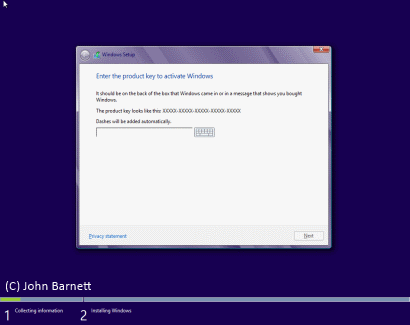
Fig: 8-3-6 Input the 25
character product key.
- Once you have inputted the product key
number press the Next button.
- You now need to accept the EULA (End User
License Agreement). Place a check mark (tick) in
the box next to the accept the license terms and
then click the Next button.
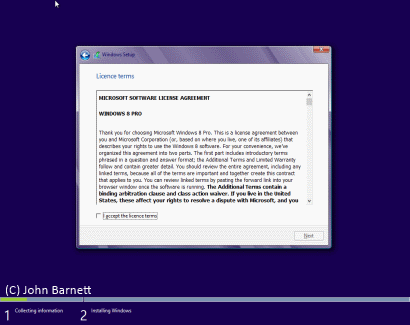
Fig: 8-3-7 Accept the license
terms to continue. If you do not accept the
license terms the operating system will not
install.
- You now have to decide which type of
installation you want. You have two options,
Upgrade and Custom. If you are upgrading from
another operating system, select Upgrade. If you
want a clean install then select Custom.
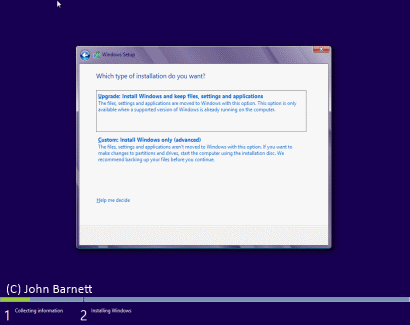
Fig: 8-3-8 Select Custom for
a clean install of the operating system.
- Now you have to select where you want to
install windows. Select the partition or drive
that you want to use and the press the Next
button.
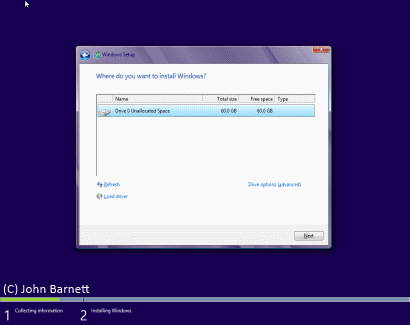
Fig: 8-3-9 Select where you
want to install windows.
- Windows will now begin copying file to
memory. As the installation progresses a check
mark (tick) will appear next to each of the
options to indicate that that part of the
installation has been completed.
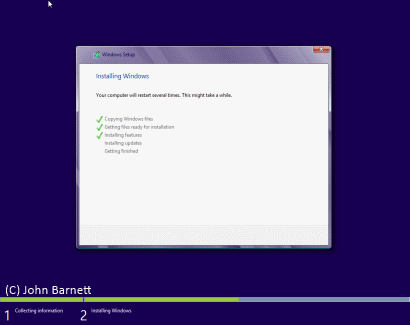
Fig: 8-3-10 The progress of
the installation is marked by a tick on the
screen.
- After the installation has completed your PC
will automatically restart.
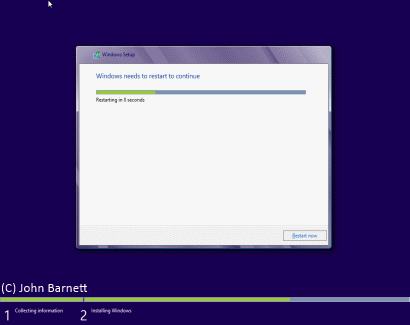
Fig: 8-3-11 Once installation
has been completed your PC will restart.
- The next stage of the installation will now
commence.
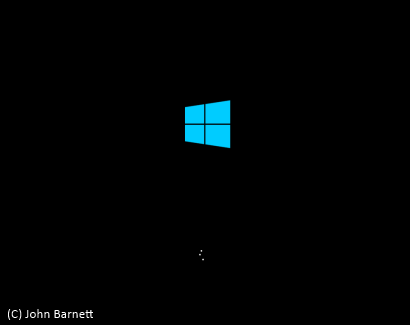
Fig: 8-3-12 The Windows Logo
screen.
- After a short while the Windows Logo screen
will disappear and the Getting Device Ready
screen will appear.
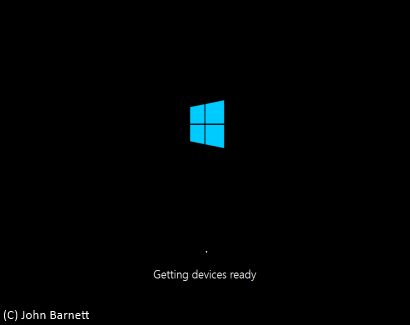
Fig: 8-3-13 Getting devices
ready for installation screen
- The next screen shows the progress being
made.
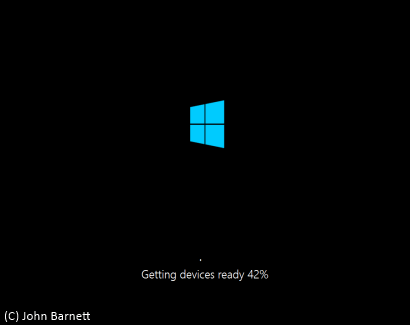
Fig: 8-3-14 Readying devices
progress window
- The screen now changes again. This time
Windows indicates Windows is Getting your system
ready.
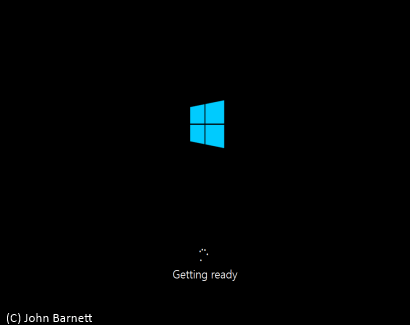
Fig: 8-3-15 Getting ready.
- Windows continues getting your system ready.
Once this has finished your system will reboot
again.
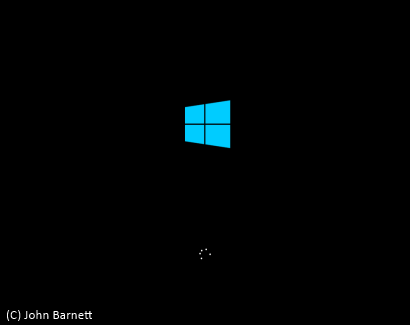
Fig: 8-3-16 Your system now
restarts.
- Once the all hardware has you will be
presented with a Let's go through a few basics
screen. You are now going to start Personalizing
your installation; setting up your wireless
connection; changing any settings and signing in
to your Windows Live account. get your system
ready for use.
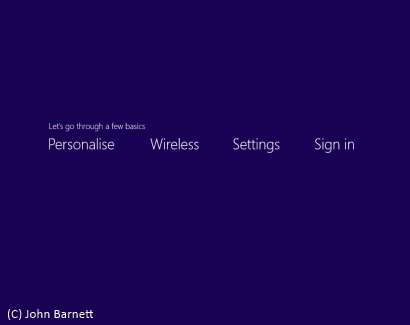
Fig: 8-3-17 Let's go through
a few basics screen.
- The screens now take on a new look as we
enter the final stages of the installation. From
the following screens you are going to be able
to Personalize your system, install your
Wireless connection, set your setting and
prepare your sign in or logon details.
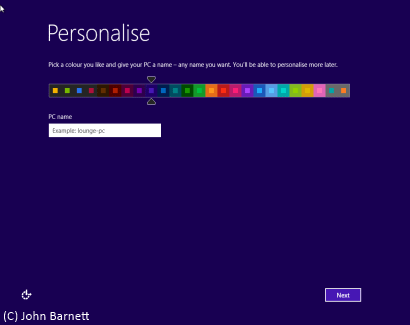
Fig: 8-3-18 On this screen
you personalize your start screen background
color and name your PC.
- The next thing to do is set up your Wireless
connection. Here you will need to input your
wireless router password. Once you have done
this press the Connect button. Windows 8 will
now log onto your router and internet
connection.
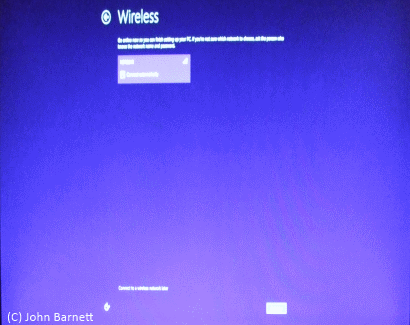
Fig: 8-3-19 Wireless router
connection screen
- In the next screen you will be asked to type
in your wireless routers password to enable
Windows 8 to access the internet. Once you have
done this, click the Connect button.
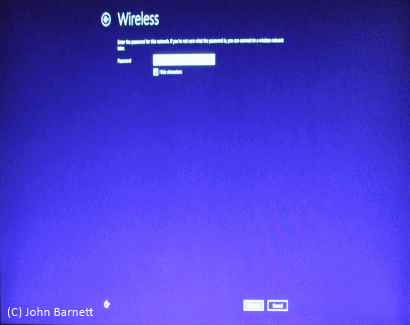
Fig: 8-3-20 Insert your
wireless router password.
- In the next screen you will be asked to
adjust your settings. You can either use the
Express setting option or, if you prefer to
customize the system, you can select Customize.
As a general rule the Express settings should
prove adequate for your needs. Press the
relevant button to continue.
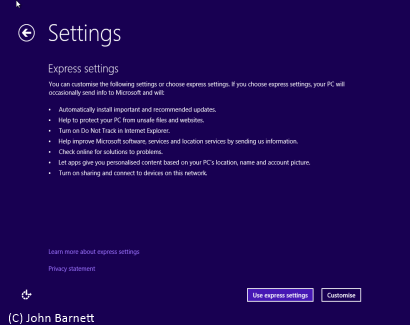
Fig: 8-3-21 You can select
the Use express settings or the Customize
button.
- Next comes the Log On option. Here you have
a choice of either signing in to Windows using
your Hotmail/Live Mail account or to sign up
using a user name and password. The default
setting is signing in with your Hotmail/Live
Mail address. If you don't want to use your
Hotmail/Live Mail address for signing in then
select the Don't want to sign in with a
Microsoft account option. The one advantage of
the Hotmail/Live Mail sign in is that all of
your accounts can be synchronized easily. If you
select the Hotmail/Live mail address option fill
in your email address and then press the Next
button
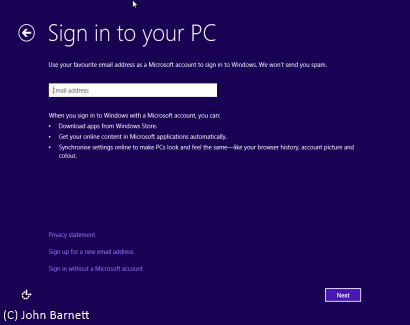
Fig: 8-3-22 Select which
option you want to use for sign in by either
adding your Hotmail/Live mail address or
selecting the option to not use a Microsoft
account and then press the Next button.
- If you select a non-Microsoft account a
screen will appear similar to Fig:8-4-23 below.
To continue click on the Local account option.
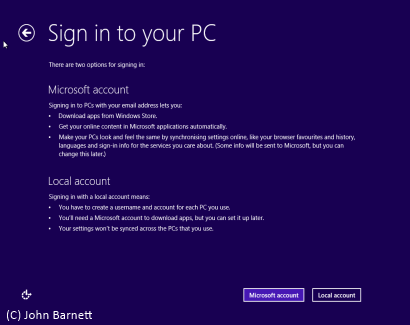
Fig: 8-3-23 you can choose to
use either a Microsoft account or a Local
account for logging in to Windows.
- In the next window you are required to input
your user name and password. Please note that
this window only appears if you have selected
the Local Account option. If you have selected
to use your Hotmail/Live Mail account all you
would have had the option earlier. Once you have
added your user name and password, press the
Next button.
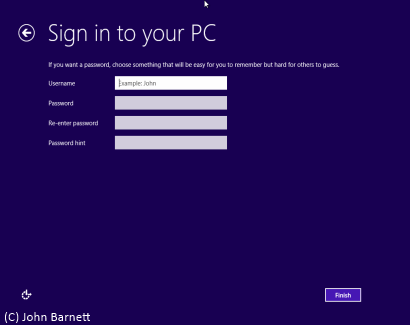
Fig: 8-3-24 Signing in to your
PC using a local account.
- If you are logging on with the default
Microsoft account, Windows will now go online
and check that you have a Microsoft account.
This will be the account you will use to logon
to your PC.
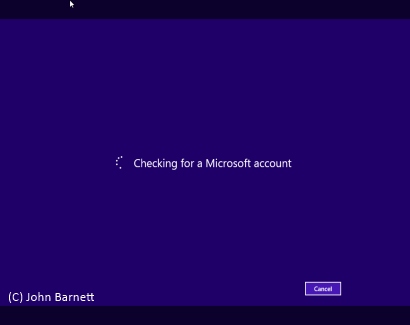
Fig: 8-3-25 Checking for a
Microsoft account.
- Once Windows has located your Microsoft
account you will be asked to sign in by entering
your Microsoft account password. Once you have
done this, click the Next button.
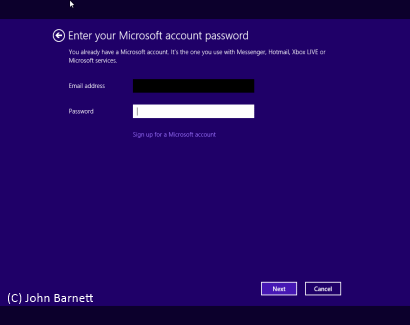
Fig: 8-3-26 Once your account
has been verified you will need to enter your
password.
- Next you need to add extra security
information such as Telephone number and
additional email address. This allows Microsoft
to contact you with Password details if you
notify Microsoft that you have forgotten your
account password. After completing this section,
click the Next button.
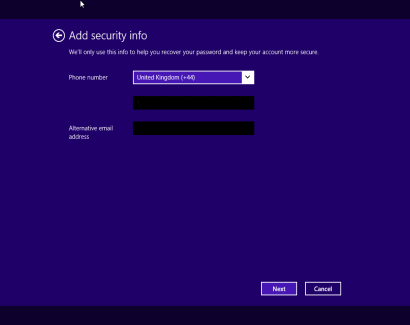
Fig: 8-3-27 Add additional
security information such as Telephone number
and additional email address.
- Once you have completed the addition
security information, click the Next button.
- Windows will now create your logon account.
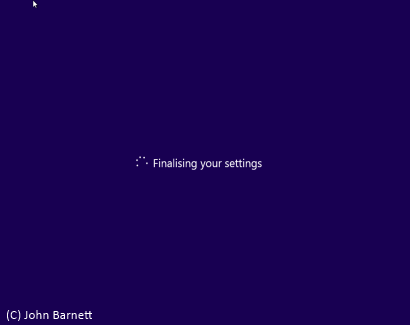
Fig: 8-3-28 Finalizing the
settings
- You will now be greeted with the Windows Hi
screen.

Fig: 8-3-29 Windows say's Hi!
- While the Windows installation is finishing
off, Windows suggests that you take a look at
the new way to use Windows.
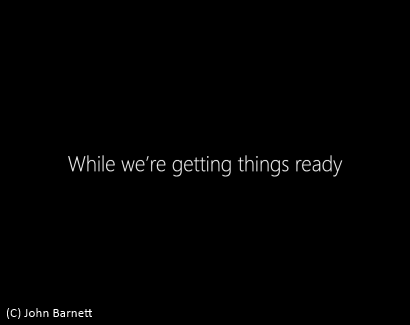
Fig: 8-3-30 While we're
getting things ready.
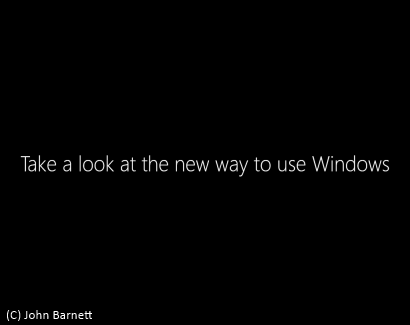
Fig: 8-3-31 Take a look at
the new way to use windows.
- The following screenshots show you what
happens when you move your mouse pointer to the
bottom right or bottom left of your screen.
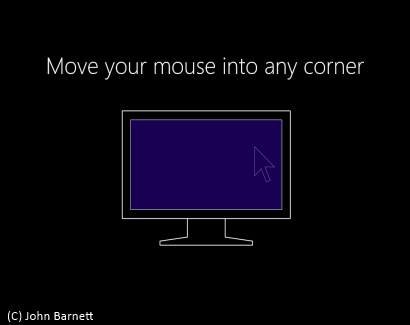
Fig: 8-3-32 Move the mouse
into a corner of your screen.
- When you move your mouse pointer to the top
right or bottom left of your screen a new charms
bar appears. If you move the mouse pointer to
the bottom left hand corner a Start Icon will
appear. The top left corner displays open
documents.
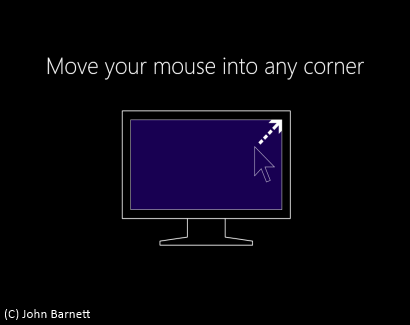
Fig: 8-3-33 By moving your
mouse curser to the top right of your screen you
initiate the charms bar.
- The new charms bar enables you to search,
synchronize, access the start screen, access
devices and turn your PC off.
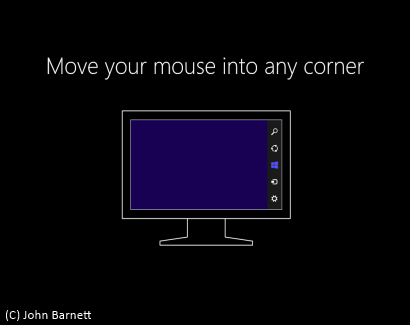
Fig: 8-3-34 The new charms
bar appears on the right of the screen.
- Windows is now getting your PC ready. This
particular screen will change color as the final
installation completes.
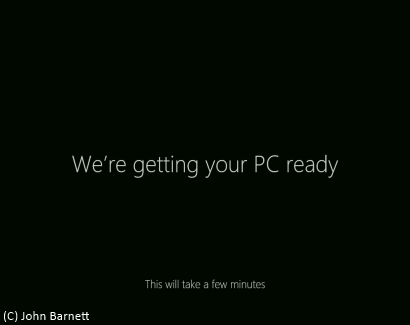
Fig: 8-3-35 Windows is now
finalizing the installation.
- As installation finalizes your Apps are
installed.
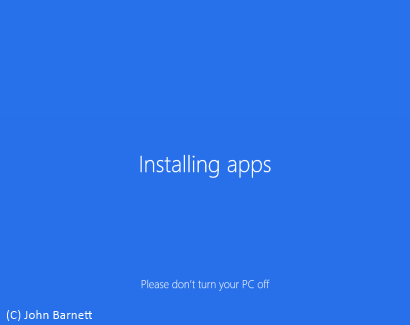
Fig: 8-3-36 The Windows
applications will now be installed.
- Just a few more things to finalize.
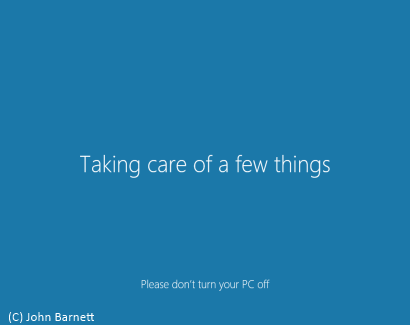
Fig: 8-3-37 Just a few more
things to take care of.
- Almost Ready!
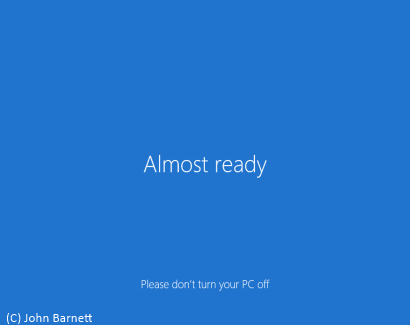
Fig: 8-3-38 Your installation
is almost complete.
- Finally your Windows installation is
complete and the Windows Start Screen appear.
You are now ready to start using Windows 8.
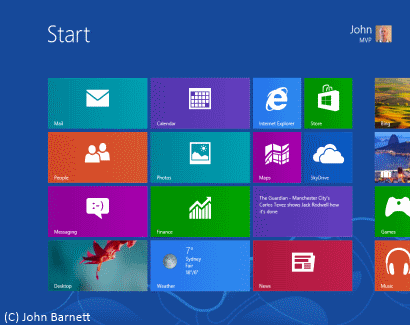
Fig: 8-3-39 The New Windows
Start screen.